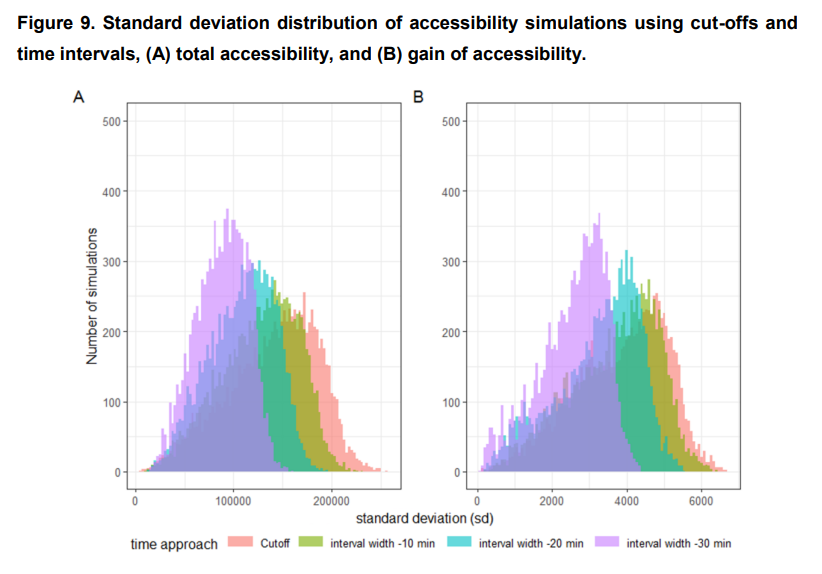A new time interval cumulative accessibility metric
I’m glad to share the preprint of a new study where we propose “A time interval metric for cumulative opportunity accessibility”. check the abstract below. If you’d like a non-academic summary, here is a Twitter thread summarizing the key findings of the paper.
- Tomasiello, D. B., Santos, D. H. M., Oliveira, J. L. A., Braga, C. K. V., & Pereira, R. H. M. (2022). A time interval metric for cumulative opportunity accessibility. SocArXiv preprint https://doi.org/10.31235/osf.io/ux5ah

Abstract:
Cumulative accessibility measures allow one to estimate the number of opportunities that can be reached within a given travel time threshold. They have become the most commonly used metric in transport research and planning because of how simple it makes to calculate and communicate accessibility results. However, cumulative opportunity measures require an ad-hoc choice of a single travel time threshold, which can importantly influence the conclusions of transport project evaluations and equity analyses. In this paper, we introduce the time interval cumulative accessibility measure, a new accessibility metric that mitigates the impacts of arbitrary choices of trip duration on cumulative accessibility analyses while keeping its computation and communicability advantages. The proposed indicator estimates the average or the median number of opportunities that can be reached considering multiple minute-by-minute travel time cutoffs within a given travel time interval. We demonstrate the new metric in a case study assessing how a planned subway expansion will likely impact employment accessibility in Fortaleza, Brazil. Using sensitivity analyses with Monte Carlo simulations, we demonstrate that the selection of travel time thresholds can substantially bias the results of accessibility levels and that such biases are not evenly distributed in space, having important implications for equity analyses. We also show that the proposed time interval cumulative opportunity metric makes the results of accessibility estimates and inequality analyses significantly less sensitive to ad-hoc methodological choices while yielding results that are very similar to those found with traditional threshold-based cumulative measures. Future accessibility-oriented transport research and planning could greatly benefit from the way in which the proposed time interval cumulative opportunity measure provides more robust accessibility estimates without compromising the communicability of results.
ps. the time interval cumulative accessibility is super easy to calculate. To make it readily available for researchers and practitioners, we have added the cumulative_interval()
function to the accessibility package in R.